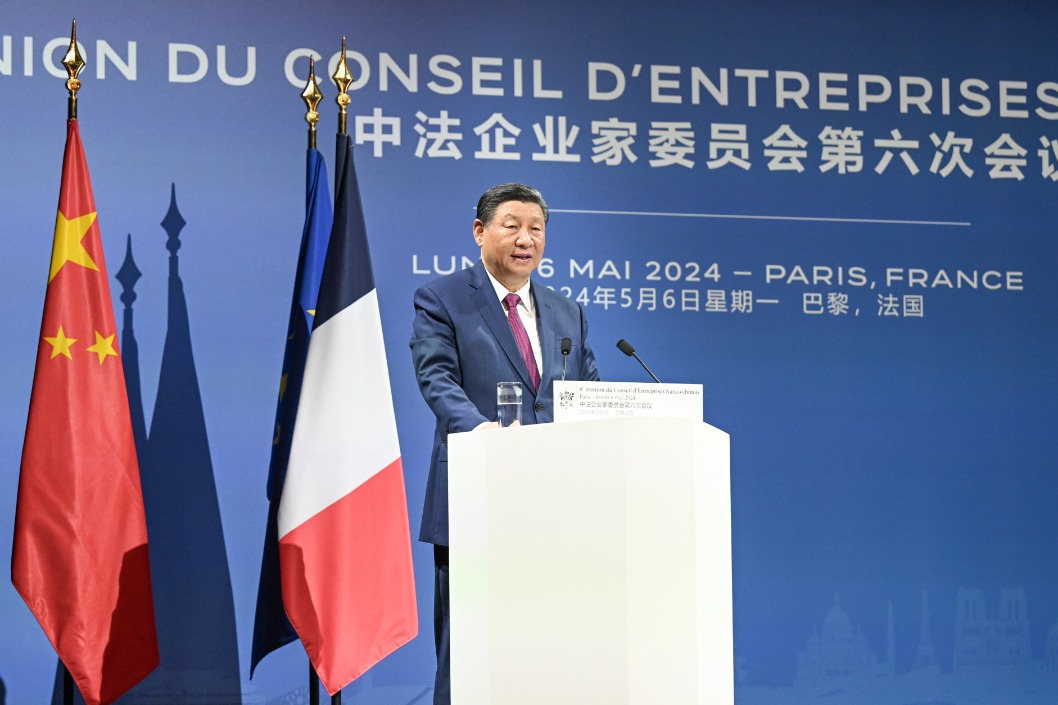Retail MNC riding consumption frenzy in nation
Foreign fashion brands continue to hike investment in Chinese market
By ZHENG YIRAN | China Daily | Updated: 2024-03-22 14:11

After 1980, fast fashion, perhaps best represented by Zara and Uniqlo, rose to prominence, and achieved a vertically integrated sales model encompassing product planning, manufacturing and retail sales, allowing consumers to purchase higher-quality products at lower prices.
Fast fashion in China started at the beginning of the 21st century. In 2002, Uniqlo opened its first outlet in China in Shanghai, unveiling China's development of fast fashion. Afterwards, a number of fast fashion brands, including Zara and H&M, entered the Chinese market one after another. The fast fashion sector in China experienced a rapidly growing period.
Data from industry research portal chinabaogao.com showed that in 2017, fast fashion brands had set up 416 outlets in China in total, reaching a peak in nearly a decade, and market volume surpassed 200 billion yuan ($27.8 billion).
However, since 2018, affected by the sluggish commercial real estate market, the impact of e-commerce platforms and the trend of consumption upgrading, the expansion pace of fast fashion brands in the Chinese mainland market has gradually slowed. In 2022, the growth of new domestic stores of fast fashion brands decreased to 154, a year-on-year decline of 49.51 percent, according to chinabaogao.com.
"In the past, with broad choices, fast product upgrades, rich fashion elements and high cost performance, fast fashion was popular among Chinese consumers. Now, facing a series of challenges and the fact that the dividend of the fashion era is waning, the industry has entered a stage of differentiation from the original stage of wild growth. To maintain competitiveness and realize sustainable development, fast fashion brands need to positively seek transformation. For example, they can establish diversified product portfolios, integrate online and offline channels, and highlight brand stories and culture," said the report from chinabaogao.com.
Zheng Lei, chief economist at cloud services provider Smydigtech, said: "After the three-year pandemic, fast fashion brands are shifting their business strategies in China to adapt to new market environments and new consumption demand. This also reflects the change and the upgrade trend in China's consumption sector. Consumers have higher demand for quality and experience."
Jiang Han, a senior analyst at market consultancy Pangoal, said: "China's fast moving consumer goods sector still maintains great potential and room for growth as Chinese consumer demand for fashion and product quality constantly grows. Although some fast fashion brands are shutting down some of their outlets in China, this does not mean foreign companies are moving out of the country.
"On the contrary, they are adjusting their strategies to adapt to new changes in the Chinese market. Through high-end transformation and digital innovation, foreign companies are striving to enhance their competitiveness in the local market."
With foreign media speculating that China's consumption remains weak and its economic growth is losing momentum, Yang Jinghao, chief economist at Concat Data Technology (Hangzhou) Co, said that the former only coincides with a statistical data gap period, while the latter is simply a replacement of concepts in macroeconomic growth models to spread pessimistic expectations.
"I hold a moderately optimistic attitude toward China's macroeconomic growth in the next two years, especially since the third quarter of last year when it was confirmed that China's economy had bottomed out in the inventory cycle. With the United States Federal Reserve launching a loose monetary policy cycle in Q3, China's external demand environment will also improve. Therefore, badmouthing China's economy at this time lacks macroeconomic logic and factual basis," he said.
Amid the backdrop of the three-year pandemic, China's consumption sector has continued to recover, serving as a strong driver of the country's economy. The latest data from the Ministry of Commerce showed that in 2023, China's total retail sales of consumer goods reached 47.1 trillion yuan, growing 7.2 percent year-on-year. The contribution rate of consumption to China's economy was 82.5 percent, demonstrating that the fundamental role of consumption is constantly rising.
Sheng Qiuping, vice-minister of commerce, said at an earlier news conference that this year, the MOC and related departments have launched a series of activities to boost consumption, and introduced a series of policy measures, including those to promote automobile and home appliance consumption, to promote the sustained recovery of consumption.
- Multinational firms swear by Shanghai on support plan for foreign R&D centers
- Opportunity for economic growth in China lies in entrepreneurship, structural reform and new technologies
- MNC chemical firms eye more investments
- Hexagon to incubate more Chinese tech firms
- Unilever eyes sweeter gains in China market
























